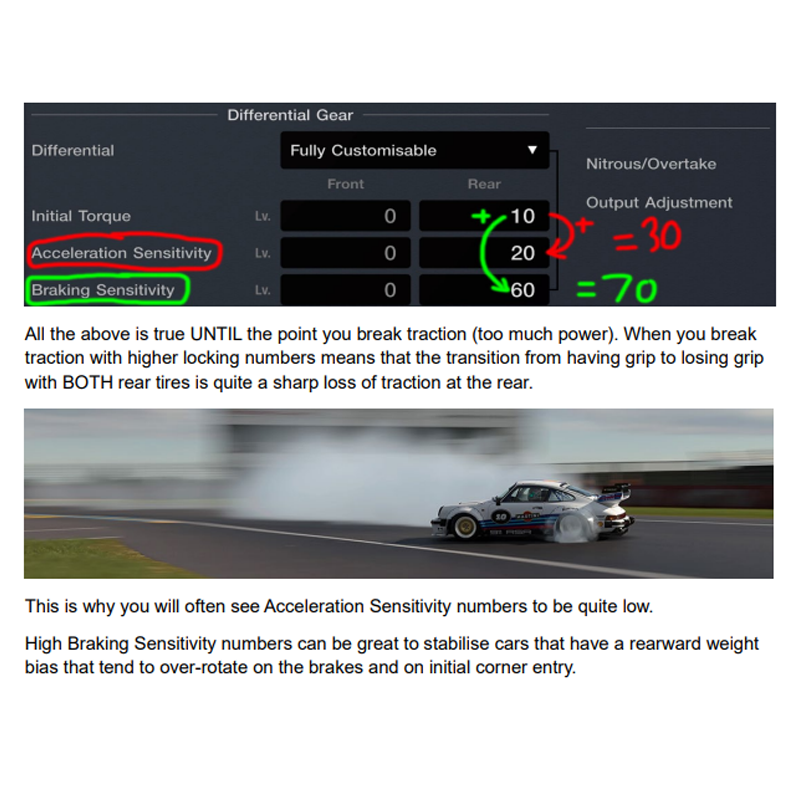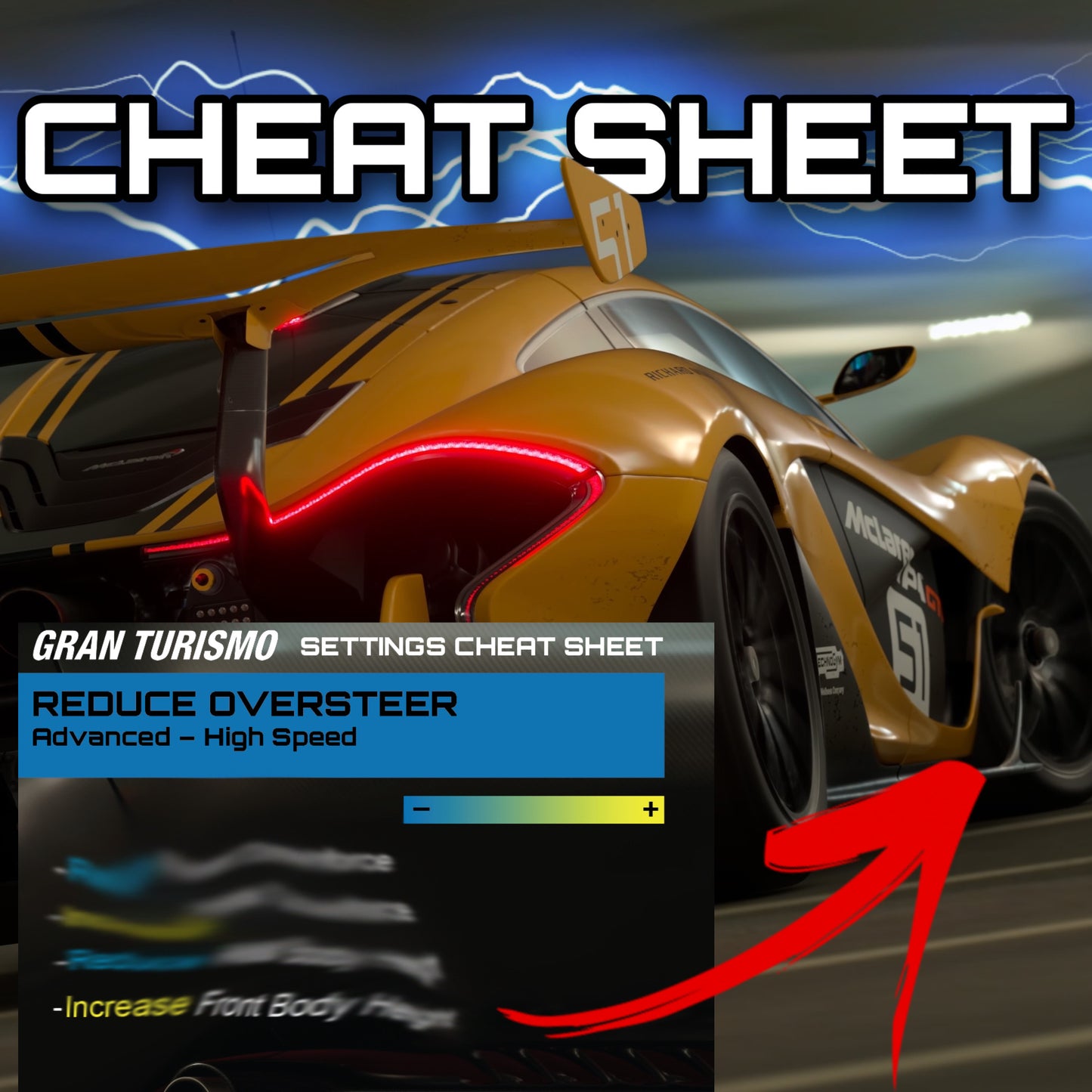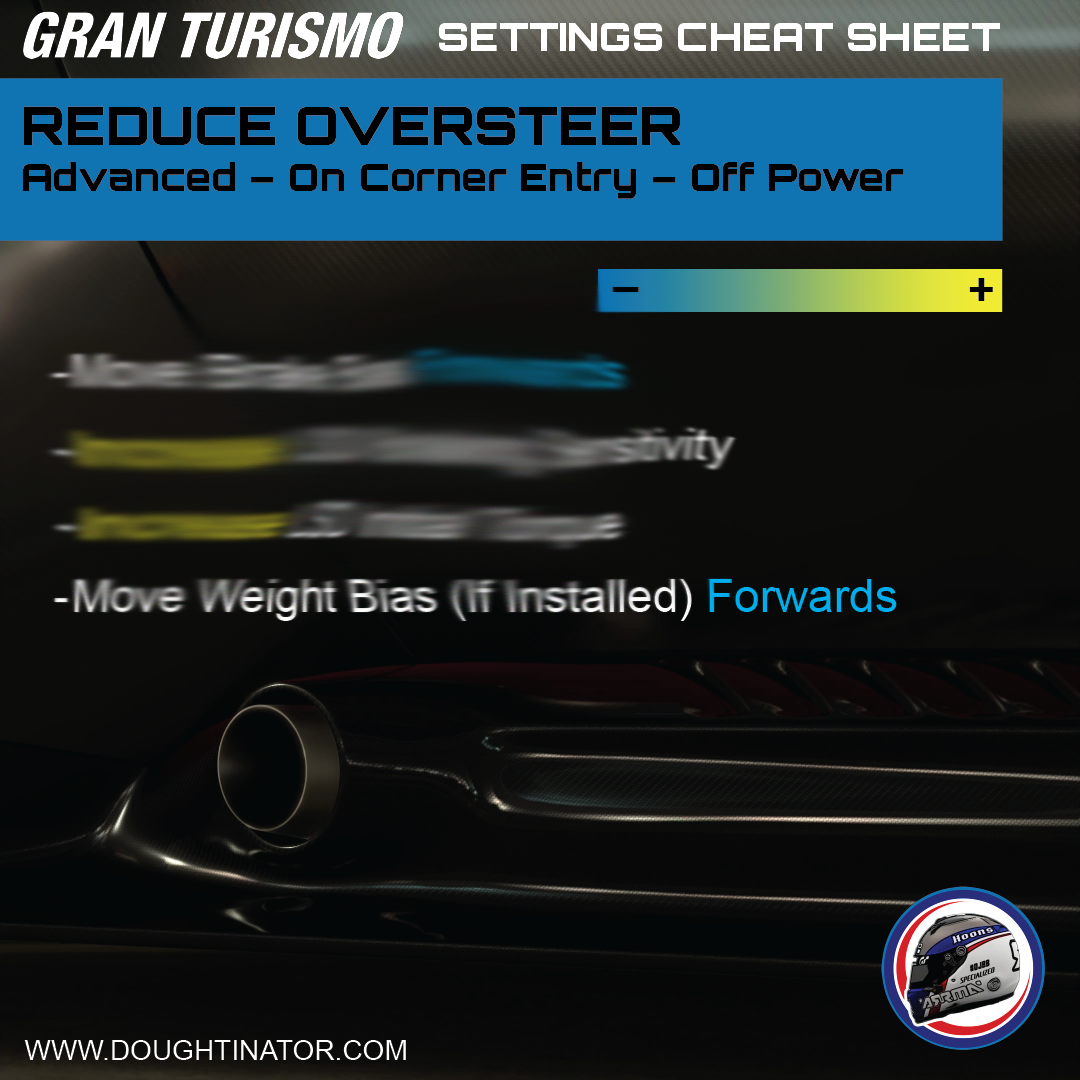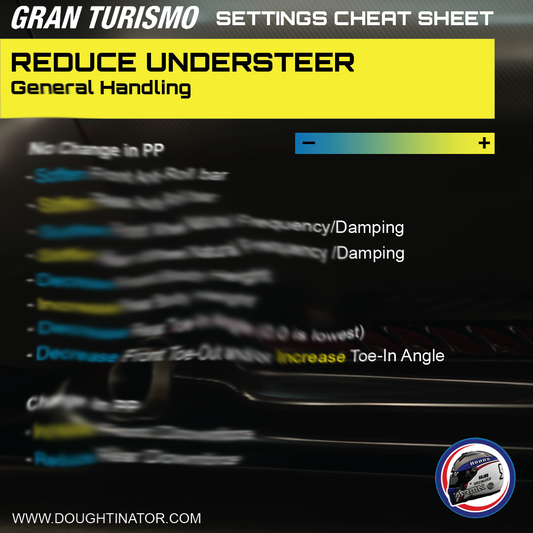Differential Gear:

Differential:
There are 4 Differential Types Available, Each has a small effect on PP and interestingly sometimes the Fully Customisable LSD can lower the PP value.
Normal: Standard Diff that is installed and is tuned specifically for each vehicle
One-Way LSD: Fixed settings with locking effect on acceleration but open on coasting or braking
Two-Way LSD: Fixed settings with locking effect on acceleration and coasting or braking
Fully Customisable: Fully adjustable LSD explained below:

Rear LSD Settings: (No Effect on PP)

Though the LSD provides a great way to control the way the car delivers its power, it s not a magic devise which gives infinite grip with overpowered cars and the benefits of what the LSD is helping with can be masked by simply asking for more power to be delivered than the tires can cope with.
Under normal operation when you have grip, the higher the number the greater the locking factor and the more resistance to difference in wheel speed. This effect stops the car from turning.

Acceleration Sensitivity is when the car on throttle, the higher the number the more the car will want to drive in a straight line and not continue turning.
Braking Sensitivity is when the car is coasting or braking, the higher the number the less keen the car is to turn into a corner.
Initial Torque should be considered as a baseline or additional resistance added to BOTH Acceleration and Braking locking effect, as a rough example below:

All the above is true UNTIL the point you break traction (too much power). When you break traction with higher locking numbers means that the transition from having grip to losing grip with BOTH rear tires is quite a sharp loss of traction at the rear.

This is why you will often see Acceleration Sensitivity numbers to be quite low.
High Braking Sensitivity numbers can be great to stabilise cars that have a rearward weight bias that tend to over-rotate on the brakes and on initial corner entry.
4WD and Front LSD Settings will be covered in another article.






























